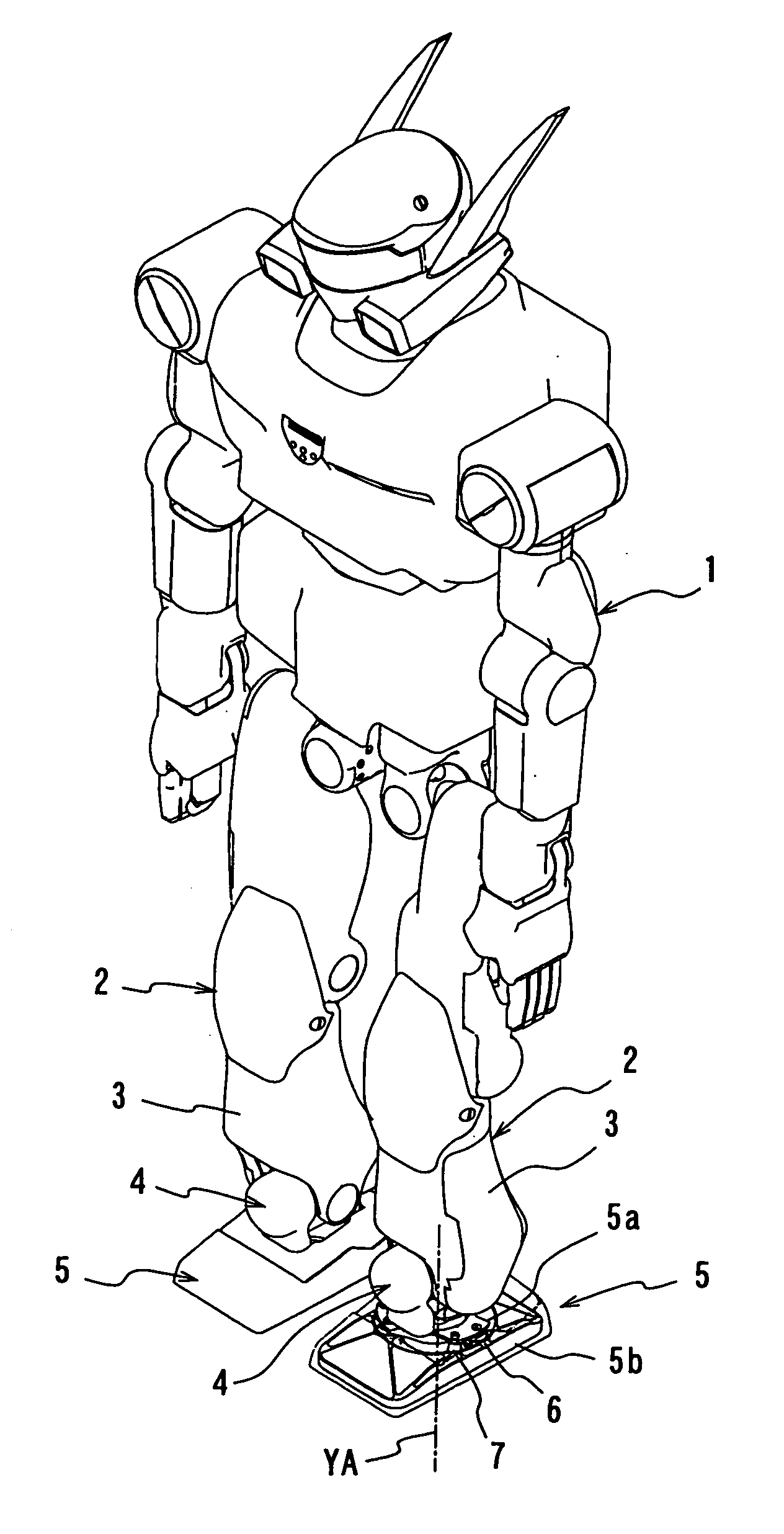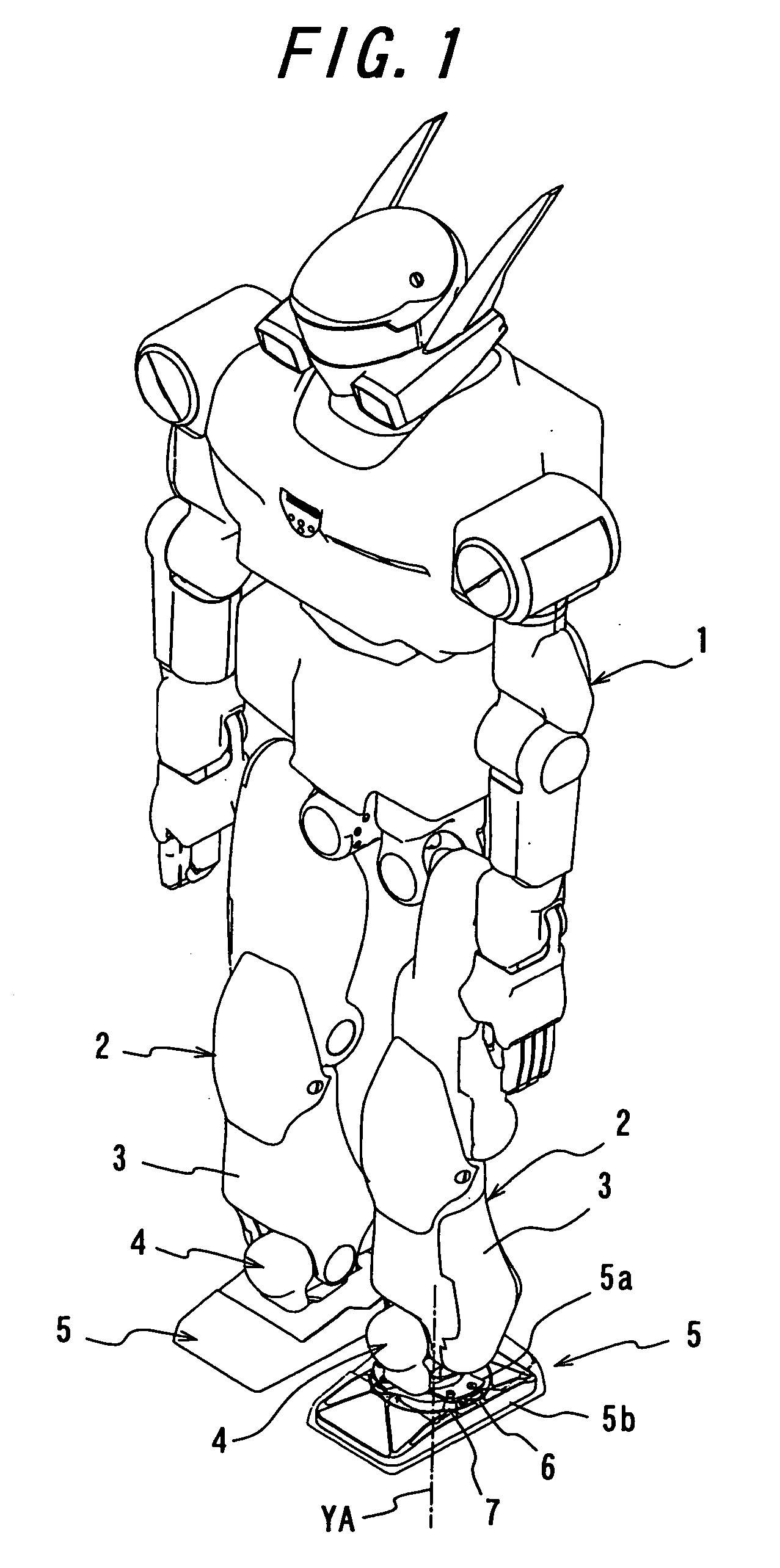Impact absorbing mechanism of walking robot
a technology walking robot, which is applied in the field of impact absorption mechanism of walking robot, can solve the problems of inability to isotropic displacement of displacement for maintaining the relative positional relationship between the base plates, prone to breakage of leg link mechanism or precision apparatus, such as sensors, in the leg link mechanism, etc., and achieves the reduction of the load on each of the joints of the movable leg, the control of the walking of the robot, and the effect of reducing
- Summary
- Abstract
- Description
- Claims
- Application Information
AI Technical Summary
Benefits of technology
Problems solved by technology
Method used
Image
Examples
Embodiment Construction
[0027] Hereinbelow, descriptions will be provided for an embodiment of the present invention, by use of an example, on the basis of the drawings. FIG. 1 is a perspective view showing an embodiment of an impact absorbing mechanism of a walking robot according to the present invention, in a state of being seen through, along with the other parts of the robot. FIG. 2 is an exploded, perspective view showing a foot including the impact absorbing mechanism according to the embodiment, along with a shank of a movable leg and a foot joint of the robot. FIGS. 3a and 3b are respectively a plane view and a side view showing the impact absorbing mechanism according to the present invention. FIG. 4 is a cross-sectional view taken along the A-A line in FIG. 3b. FIG. 5 is a cross-sectional view taken along the B-B line in FIG. 3a. FIG. 6 is a cross-sectional view taken along the C-C line in FIG. 3a. FIG. 7 is an explanatory diagram showing an operational condition of the impact absorbing mechanis...
PUM
 Login to View More
Login to View More Abstract
Description
Claims
Application Information
 Login to View More
Login to View More - R&D
- Intellectual Property
- Life Sciences
- Materials
- Tech Scout
- Unparalleled Data Quality
- Higher Quality Content
- 60% Fewer Hallucinations
Browse by: Latest US Patents, China's latest patents, Technical Efficacy Thesaurus, Application Domain, Technology Topic, Popular Technical Reports.
© 2025 PatSnap. All rights reserved.Legal|Privacy policy|Modern Slavery Act Transparency Statement|Sitemap|About US| Contact US: help@patsnap.com



